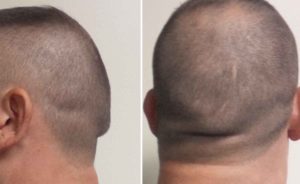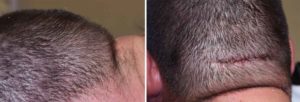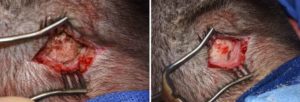Background: The skull is prone to having numerous types of irregularities on its many surfaces. Bumps and indentations are common and can occur from natural development or from later trauma after birth. The fusion of the various skull plates and anterior and posterior fontanelles affords the opportunity for such skull irregularities to occur.
One such well known skull protrusion is that of the occipital knob deformity. This is a distinct midline outcropping of raised bone on the back of the head that is usually circular in shape. It sticks out as a raised knob that is very visible in men that have close cropped hair or shaved heads. It appears to be a gender specific skull protrusion as I have never seen or heard of it in women.
Why the occipital knob skull deformity occurs is not precisely known. It is also known as the occipital bun or occipital horn and is anthropologically associated with Neanderthal skulls. While common in early man it is relatively rare in modern homo sapiens. It has been theorized that it occurs due to enlarged cerebellum or is a remnant of the adaptation to running. It has also been speculated that it occurs more frequently in more narrow skulls. (although I have seen it in both normal as well as more narrow skulls) Regardless of its origins in the man who has a large knob sticking out from the back of their head it is aesthetically undesireable.



Highlights:
1) The occipital knob deformity is a congenital bony protrusion on the back of the head.
2) It is an outcropping of thicker skull bone that can be reduced by a bone burring technique.
3) Occipital knob skull reduction is done through a small horizontal incision either right over it or just below it.
Dr. Barry Eppley
Indianapolis, Indiana



